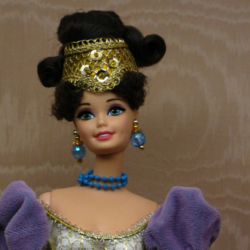Rebranding initiatives are topping industry headlines, from shining successes, like Instagram’s fresh look, to head-scratching fails, like Pepsi’s underwhelming reboot. In the realm of rebranding, companies face a steep challenge. Social norms and expectations evolve daily, and brands that hang their hats on one trend risk a quick and drastic crash. Even slow evolutions, such as the market shift in demand from mass quantity to mass quality, can require a rapid revamp in how a company does business.
While some can get away with a logo tweak, other brands require entirely new positioning. Barbie, a beloved icon stretching back to the 1950s, recently faced this poignant challenge.
Imagine the Possibilities
Fans had tired of Barbie’s unrealistic figure and vapid demeanor, so much so that stocks plummeted by 40 percent by 2014. In response, the execs of Mattel—the creator of Barbie—didn’t just repackage the doll in a different scenario. They repositioned how the public saw Barbie’s role as a whole.
The “Imagine the Possibilities” campaign unveils the story of a young girl physically living out each of her dreams—from a veterinarian or university professor to a high-level, jet-setting executive. Her playtime with Barbie opened a world of dreams that she couldn’t otherwise access, her key to realizing her unlimited potential.
Reframing an Icon
The campaign effectively leveraged Goffman’s framing theory, a mass communication theory originally developed to evaluate the influence of media positioning. Framing theory suggests that the way in which an issue is positioned (the “frame”) affects how the audience processes the topic. In essence, it doesn’t matter as much what you discuss but rather how you discuss it in relation to other topics or comparisons.
Mattel completely removed the familiar framework of Barbie in relation to her appearance … or even as a toy at all. It recreated a new reference, positioning Barbie as a symbol, a gateway to untapped possibilities, a tool that would enable growth.
Honoring the Foundation
From a cursory glance at this campaign, one might accuse Barbie of departing from her founding principals. It seems like a scenario of pretty girl turning to academics as a quick fix to attract 21st century fans. Not so. From inception, Barbie was designed to help children vicariously explore and live out their potential aspirations. In fact, over the past 50 years, Barbie has had approximately 150 careers, including president.
Creativity and innovation plus effective repositioning that honored the original vision — that’s one success story for the books.
Looking to re-evaluate your brand? Check out these branding tips (from a food truck!), or shoot us an email.



